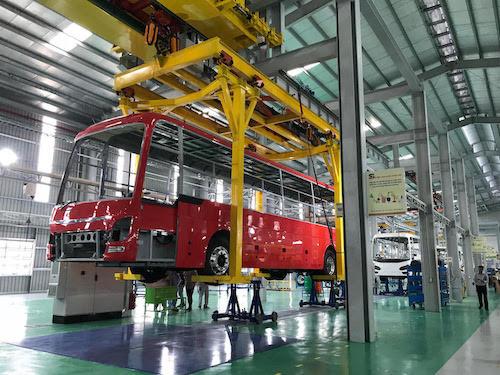
Cars assembled in Vietnam cost more than imported ones, belying consumers’ expectations, and hampering the growth of the auto industry. Earlier this month, Honda unveiled its compact SUV CR-V assembled in the northern province of Vinh Phuc. The car costs VND1.2 billion ($51,700), VND25 million ($1,080) more than the imported version.
The assembled-in-Vietnam Toyota Fortuner, another SUV, costs VND7 million ($302) higher than the imported version, while the locally-assembled Mitsubishi Xpander AT, an MPV, has the same price as its imported version from Indonesia.
Many buyers expect locally assembled cars to cost lower than imported ones, but several factors don’t allow this to happen. This situation could blur the government’s vision for developing the domestic car industry.
The costs of importing parts to assemble a car in Vietnam is higher than importing a completely-built unit, and this is the main reason why the former costs more, said a spokesperson for a Japanese auto brand who wished to remain anonymous.
Car parts have an import tax of 7-9 percent, while completely-built units imported from Thailand and Indonesia are tax-free under the ASEAN Trade in Goods Agreement (ATIGA) that took effect in 2018.
Auto brands have to import parts because local suppliers are not capable of making complicated parts. Vietnam had targeted to reach a 60 percent localization rate for passenger cars in 2010, but until now it remains at 7-10 percent, compared to the ASEAN average of 55-60 percent.
The inability of suppliers in Vietnam to make parts more complicated than tires, seats, and wires require the domestic industry to import about $2 billion worth of car parts each year, mostly components like the breaking and steering system, from countries like Japan, China, and South Korea, according to a report by the Ministry of Industry and Trade.
Importing in large numbers can lower the prices of these parts, but Vietnam’s market is too small for auto brands to expand their production scale, industry insiders have said.
Car sales in Vietnam reached 385,600 units last year, but the size of the Indonesia and Thailand market was 2.6 times bigger and that of Malaysia, 1.6 times.
“Producing a car in Vietnam costs 15-20 percent more than in other countries,” said the strategic and planning head of another Japanese auto brand who also wished not to be named. For example, the production scale of the same car model in Thailand could be two or three times bigger than in Vietnam, making prices lower, he said.
For now, locally assembled luxury cars are the only ones that cost lower than their imported peers, because the import tax for this vehicle segment is around 70 percent as they are usually imported from Europe and Japan.
However, this advantage will not last as the import tax on cars from the E.U. will gradually fall and be cut within the next 10 years under the EU-Vietnam Free Trade Agreement that takes effect next month.

